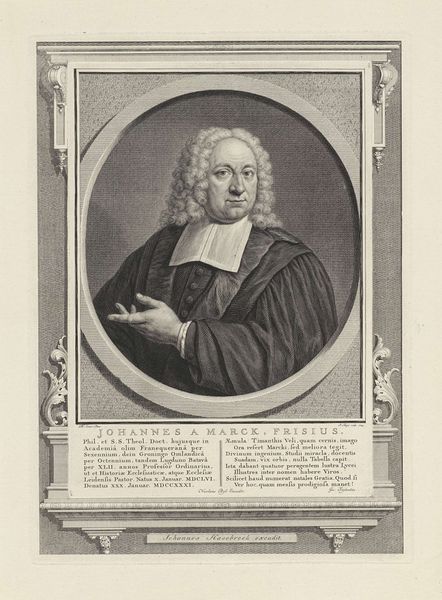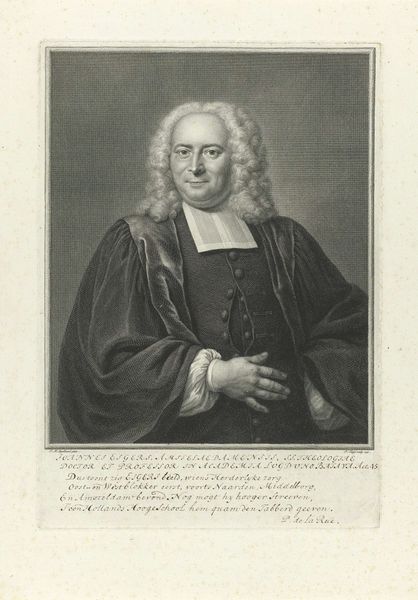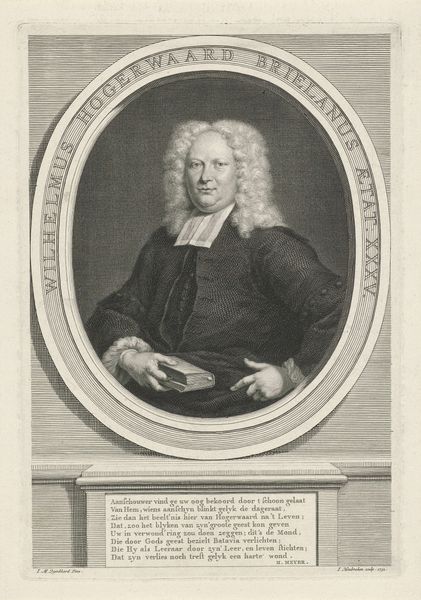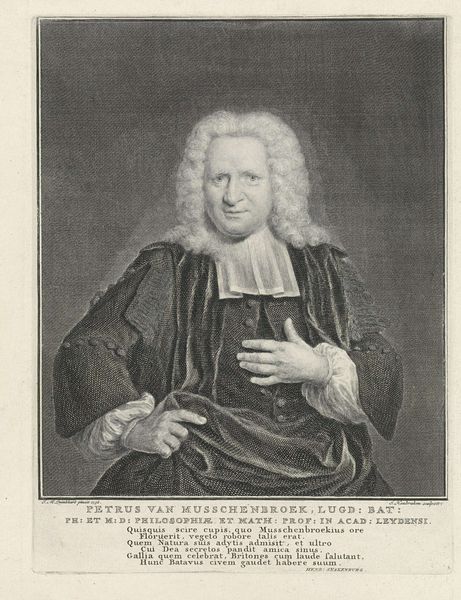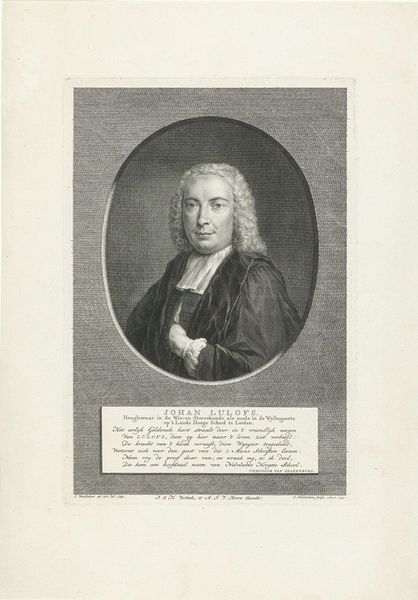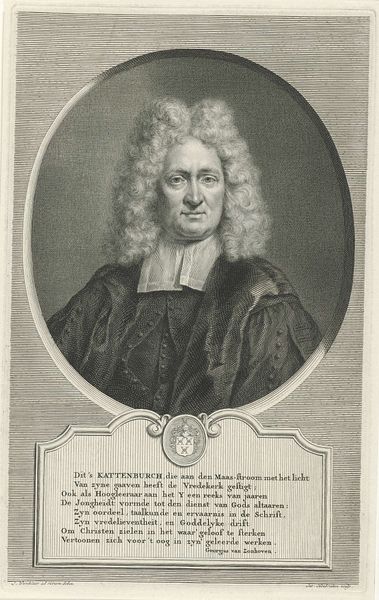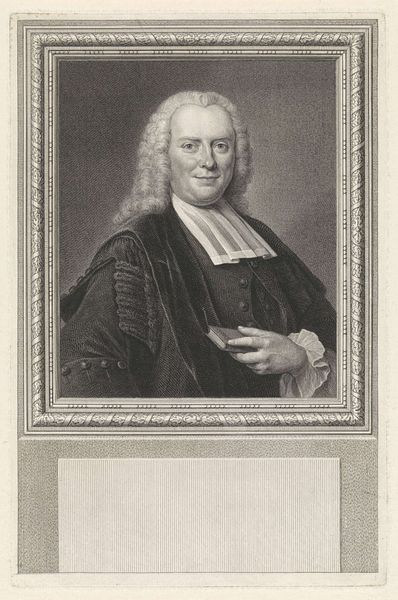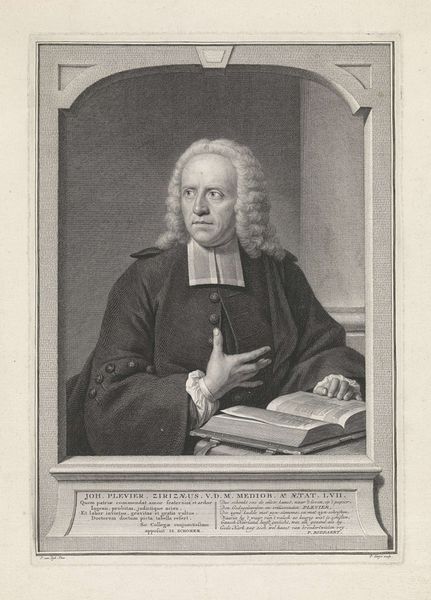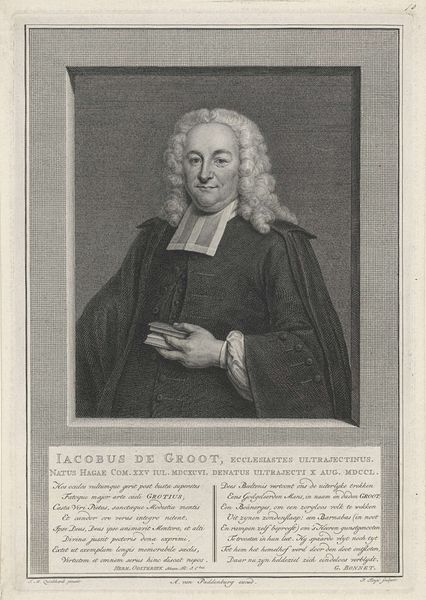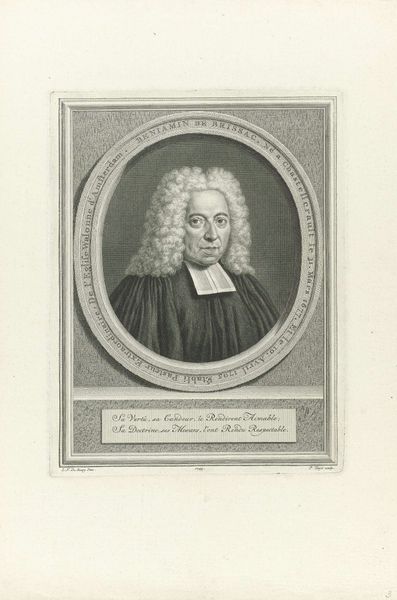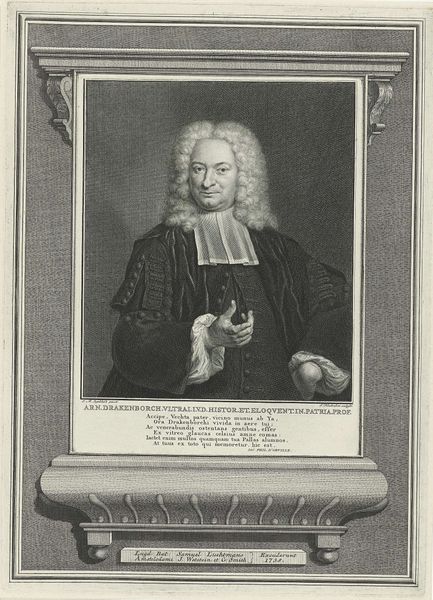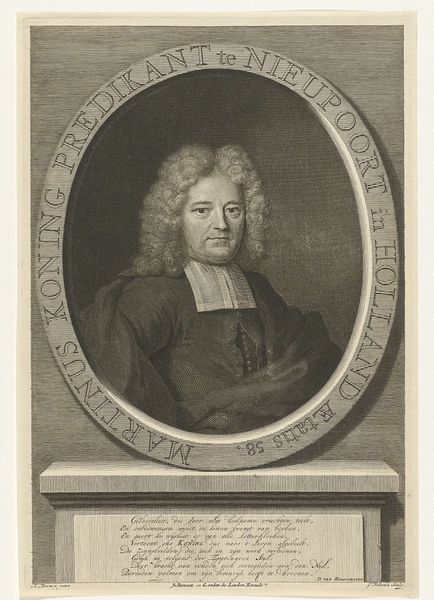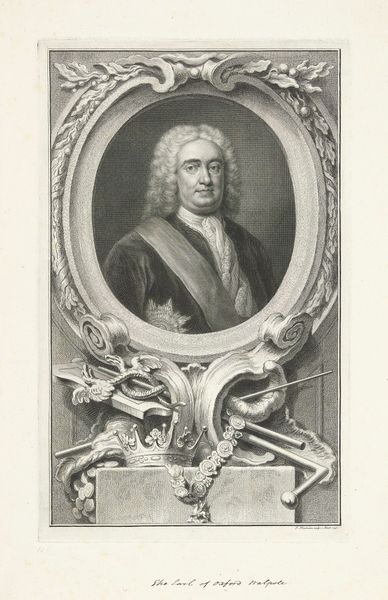
print, engraving
#
portrait
#
baroque
# print
#
15_18th-century
#
engraving
#
realism
Dimensions: height 378 mm, width 272 mm
Copyright: Rijks Museum: Open Domain
Curator: Here we have Pieter Tanjé’s "Portret van Johannes Esgers," created in 1741. It’s an engraving, currently held in the Rijksmuseum collection. Editor: My first impression is one of formal constraint, almost severity, offset slightly by the softness of the rendering around his face and wig. The contrasting tones definitely create a very controlled atmosphere. Curator: Indeed. Tanjé’s handling of line is particularly striking. The intricate network of hatching and cross-hatching to render the velvet robe, for instance, demonstrates a technical mastery focused on the details of material. The light interacts quite fascinatingly with those carefully etched lines. Editor: It makes you think about the economics of reproduction. Engraving like this would allow the portrait to be widely disseminated, almost like early image media. This democratizes portraiture but at the expense of the immediate tactile connection you get with something like oil paint. It seems the material choices directly influenced who could see and afford art at the time. Curator: Precisely! Consider the composition too. The symmetry within the decorative frame and his centered posture lends a certain monumentality, even an attempt to project authority, reinforced through classical proportions and ratios within the engraving’s design. Editor: But I’m also thinking about labor—the hours involved. Tanjé wasn’t just representing Esgers but enacting a whole set of production relationships, mediated by craft, where he painstakingly carves into that copper plate. We shouldn’t forget that skill and that hand, the work involved. Curator: A valid and important perspective! Analyzing Tanjé's decision to employ this intricate Baroque aesthetic while still operating in what might be seen as a proto-realist mode, brings layers of meaning. The face renders a very real sense of his human character as well. Editor: It's fascinating to think about the value placed on these prints, not only aesthetically, but materially—what did a print like this cost, in labor hours and in currency, for those who consumed it? Curator: Yes, a vital point, and one that frames my understanding of the print in an exciting way. Thank you for illuminating that aspect of it! Editor: And thank you. It really enhances one’s sense of its aesthetic complexity.
Comments
No comments
Be the first to comment and join the conversation on the ultimate creative platform.
